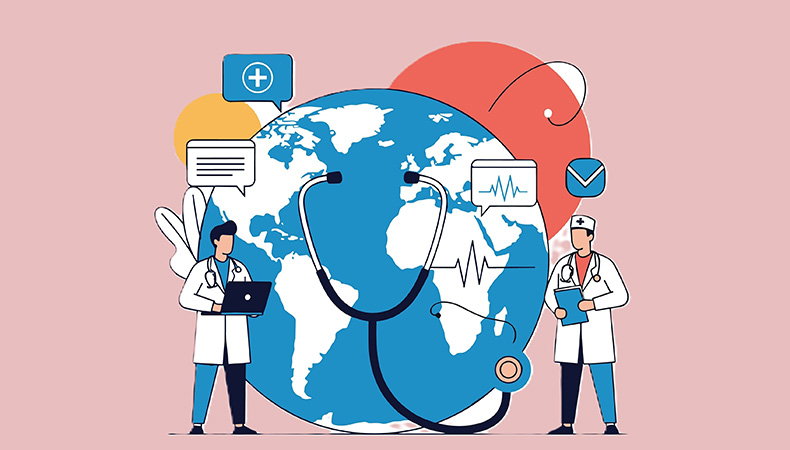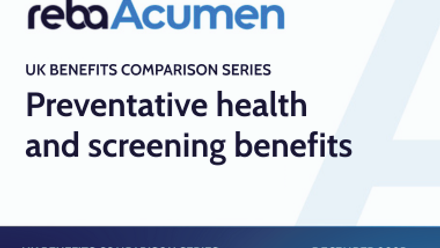Top tips for ensuring consistent healthcare access across locations
Today’s workforce isn’t tied to one place. People are working from home, from regional hubs, from co-working spaces, and sometimes even from different countries.
That flexibility has opened up new possibilities for how we work but it’s also made it harder to deliver consistent access to health and wellbeing support.
Too often, health services are designed around a central location. That means people outside head office can end up with fewer options, more friction, and less clarity on what’s available to them. To close that gap, employers need to think differently.
So how can healthcare access work for everyone – no matter where they’re based?
Think localised healthcare with a national mindset
One size rarely fits all in health and wellbeing. While centralised services can be efficient, employees in regional areas or rural locations often face access challenges – from availability to simple awareness of what’s on offer. These are not just logistical issues; they’re barriers that can delay action, engagement, and affect outcomes.
We also know that working from home isn’t always a health-neutral environment.
Studies have shown a sharp rise in musculoskeletal pain during the shift to remote work. Neck, back, and shoulder pain have been reported in up to 70% of remote workers, particularly in screen-based roles without ergonomic support (International Journal of Osteopathic Medicine, 2023). Employees in these settings are often the least likely to access preventive care.
A growing solution is the rise of pop-up health clinics, such as mobile or temporary setups hosted in accessible locations like hotels, community centres, or office spaces. By bringing healthcare directly to where people live and work, these models help reduce friction and make it easier for individuals to take that crucial first step.
This matters because behaviour change is hard. Even with the best intentions, people often need a prompt, or a moment of convenience, to engage. The flexibility of these models offers a scalable way to create consistent, convenient access across diverse workforce locations.
Deliver health intelligence through digital tools
Healthcare isn’t just about treating illness. It’s about creating the conditions for long-term prevention. But prevention only works if people engage with it, and that means overcoming other behavioural barriers, such as inertia, uncertainty, and lack of time.
Digital health platforms play a key role here. When employees can easily track markers like blood pressure, cholesterol, weight and stress, they begin to build personal insight and improve their health intelligence.
But data alone isn't enough. We also know that people need timely prompts, achievable goals, and feedback to stay motivated.
That’s where digital tools shine. Platforms like My Wellness from Bluecrest offer not just tracking, but tailored content designed to meet people where they are. These platforms can be crucial in eliminating geographical barriers, ensuring employees working remotely or across multiple sites have the same level of health insight and encouragement as their peers.
Bridge the gap between awareness and action
Awareness is a critical step too, but it’s only valuable if it leads to action. Often, employees may receive health information that’s either generic, disconnected, or hard to act on – especially if they’re not based near traditional care routes or in-office services.
For organisations trying to ensure consistent access across locations, this is a key point of failure. It’s not enough to provide screenings or digital dashboards in isolation. Employees need clear, actionable next steps, ideally personalised to their situation and accessible from wherever they are.
This is where joined-up health ecosystems come into their own. By connecting physical health checks with digital follow-up tools – such as personalised health plans or reminders – employers can close the gap between insight and intervention.
For example, an employee attending a health check may receive their results instantly via a digital portal, along with tailored recommendations for future support and nudges on lifestyle change. Whether that person is in a head office or a home office, they then have the same opportunity to act.
Summary
Making healthcare truly accessible means more than just offering services. It’s about meeting people where they are, removing barriers, and supporting lasting behaviour change.
Whether through localised clinics that bring care closer, digital tools that empower self-management, or seamless connections between awareness and action, consistent access is achievable.
When organisations design health and wellbeing with flexibility and intention, they not only improve outcomes but also show every employee they matter, no matter their location. That’s the future of equitable, effective care: health support that moves people, moves with your people, and makes wellbeing work everywhere.
Supplied by REBA Associate Member, Bluecrest Wellness
Bluecrest Wellness offers high-quality health screenings.








